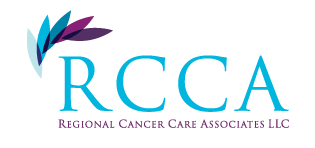- Advertise
- About OncLive
- Editorial Board
- MJH Life Sciences brands
- Contact Us
- Privacy
- Terms & Conditions
- Do Not Sell My Information
2 Clarke Drive
Suite 100
Cranbury, NJ 08512
© 2025 MJH Life Sciences™ and OncLive - Clinical Oncology News, Cancer Expert Insights. All rights reserved.
Personalized Medicine Takes Another Step Forward
Like you, I get up every day and look at the stack of journals I know I need to read but cannot imagine when I will find the time.
Andrew L. Pecora, MD
Editor-in-Chief of Oncology & Biotech News
Chief Innovations Officer, Professor, and Vice President of Cancer Services John Theurer Cancer Center at Hackensack University Medical Center
President, Regional Cancer Care Associates, LLC
Like you, I get up every day and look at the stack of journals I know I need to read but cannot imagine when I will find the time. That is, until a new piece of information relevant to clinical care surfaces through one of the many channels to which practicing oncologists are linked. The good old days of waiting to receive your ASH and ASCO abstract book to keep current would appear to be over because of the rapid evolution of clinically meaningful genomic information. So-called “personalized medicine” that needs to account for iterative refining of diagnostic/prognostic information has emerged as a driving force in oncology care decision making.
Highlighting this revolution was a recent article in The New England Journal of Medicine entitled, “Panitumumab- FOLFOX4 treatment and RAS mutations in colorectal cancer” (2013;369[11]:1023- 1034). Lead author Jean-Yves Douillard, MD, PhD, and colleagues noted that patients with metastatic colorectal cancer whose tumors express a mutation in KRAS in exon 2 clearly do not benefit clinically by the addition of anti-EGFR therapy. They examined whether the same negative association between EGFR efficacy and mutation applied to other activating RAS mutations.
Douillard et al’s analysis included 620 patients with metastatic colorectal cancer, 512 of whom were RAS mutation—negative and 108 patients who had a mutation. As expected, progression-free survival for wildtype patients treated with FOLFOX-4 with and without panitumumab differed significantly in favor of the panitumumab group (10.1 vs 7.9 months; P = .004), as did overall survival (26.0 vs 20.2 months; P = .04).
In striking contrast, those patients with other RAS mutations (NRAS exon 2, 3, or 4, and BRAF exon 15) had significantly shorter progression-free survival when treated with combined panitumumab and FOLFOX-4 versus FOLFOX-4 alone (7.3 vs 8.8 months; P = .02), which is similar to what has been observed with KRAS-mutant tumors. Overall survival was also lower in this group when panitumumab was added to FOLFOX-4.
This sort of data has profound clinical and economic consequences. Our nation is grappling with the rapidly rising cost of cancer care. Some are advocating limiting treatment choices based on the relative economic benefit. We are engaged in conversations about what is a meaningful extension of survival or progression-free survival versus relative cost. If we could only be smart enough to predict upfront who would be on the tail of the curve alive and progression-free far beyond the median.
Well, Douillard et al have provided us with a glimpse of how this may occur. I am a big proponent of the Goldilocks formula for cancer care delivery: not too much, not too little: just right. Avoiding medications, particularly those that are expensive, because there is a molecular signal predicting lack of efficacy is in line with not too much. For now, we need to make sure we do not accept too little. However, the work by Douillard et al indicates that the future of personalizing the correct care for the correct patient is bright and could even make Goldilocks happy.


